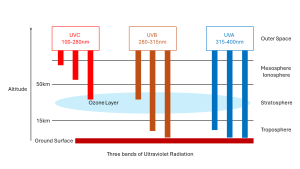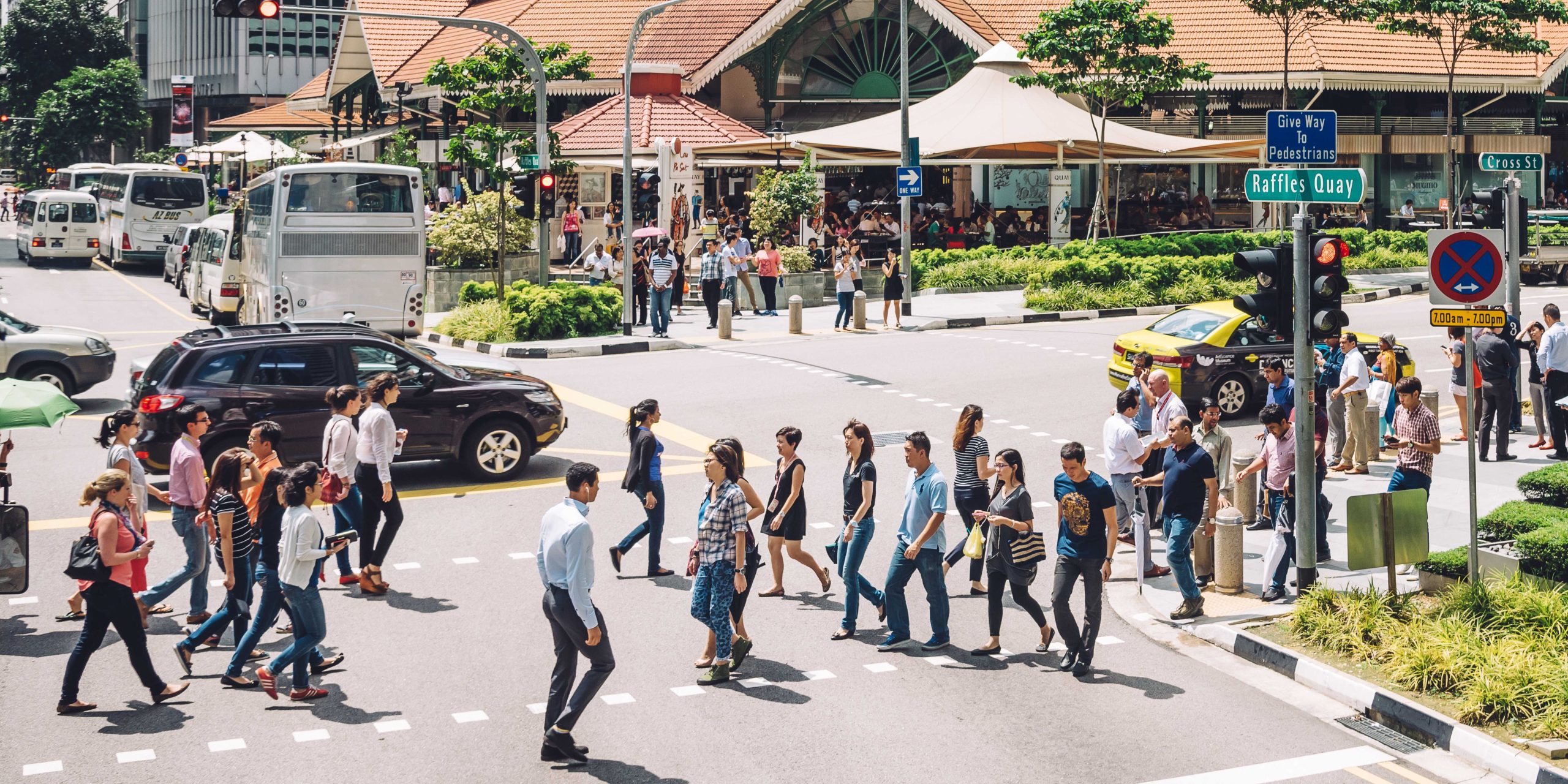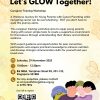Singapore’s year-round sunshine is a treat, but it is important to protect our skin from harmful UV rays. How can we enjoy the outdoors while staying safe? Read on to learn more!
What is Ultraviolet Radiation?
Ultraviolet radiation (UVR) refers to the electromagnetic spectrum region with a wavelength between 100-400 nm (NEA, 2024).

Three bands of UVR are emitted by the sun:
- UVA (315-400 nm) – Have the longest wavelengths, transmitted through the atmosphere
- UVB (280-315 nm) – Transmitted through the atmosphere
- UVC (100-280 nm) – Have the shortest wavelengths
Two bands of UVR that we encounter are UVA and with a small amount of UVB. UVA and UVB rays pass through the atmosphere, while the Earth’s ozone layer absorbs all UVC and some UVB rays (FDA, 2020).
Is UVR harmful to us?
In general, small amounts of UVR are beneficial to health, playing an essential role in vitamin D production, which strengthens the bone and musculoskeletal system. However, excessive exposure to UVR is associated with negative health consequences, it can cause DNA damage, sunburn, and immune system suppression, increasing the risk of cancer and reactivating viruses like cold sores. (WHO, 2024).
How do UVA and UVB affect our skin?
The sun emits UVA and UVB rays, both are invisible to the naked eye and affect the skin differently.
UVA rays are less powerful but have a longer wavelength, which could penetrate the middle skin layer (dermis) and cause skin tanning. UVB rays are more powerful though it has a shorter wavelength, and able to affect the top skin layer (epidermis) which could cause skin burning (FDA, 2020; The American Acne Association, 2024).
Extended exposure to UVA and UVB rays can result in premature skin aging and increase the risk of skin cancer. UVB, the stronger type, is linked to the development of malignant melanoma, a serious form of skin cancer (WebMD, 2024; WHO, 2024).
How is the UV Index (UVI) being measured?

The UVI measurement was created by the World Health Organization (WHO), the United Nations Environment Programme (UNEP), and the World Meteorological Organization (WMO) to gauge UV radiation exposure. It tells us how much solar UVR reaches the Earth’s surface and depends on UVA and UVB radiation (NEA, 2024). UV levels and the index values change during the day, with the highest levels usually occurring between 11 am and 3 pm. The UVI ranges from 0 to 11+ and is divided into categories that show the potentially harmful effect on the skin. According to the WHO, it is recommended to use sun protection, such as sunscreen lotion, UV-protected umbrellas, and hats when the UVI is 3 and above (WHO, 2024).
How common is it in Singapore to get high levels of UVI?
According to the National Environment Agency (NEA), it is very common for the UVI in Singapore to reach Very High and Extreme Levels during the 4-hour maximum UVR level between 11 am and 3 pm. In fact, on 19 February 2018, the UVI level once climbed to the extreme level of 16 between 1 – 2 pm (NEA, 2024). On 27th March 2024, the NEA advised people to use extra sun protection as Singapore’s UVI reached an extreme level of 12, and the level of UVI remained as high as 10 the next day (Khim, 2024; Begum, 2024).
The level of UVI values in Singapore is higher during the dry months, i.e. in February and March. This is when there is less cloud cover and when the sun shines directly over the equator (NEA, 2024). However, hotter temperatures do not necessarily mean that UVI is higher. This is because UVR is not tangible to us, and it does not affect our outdoor temperature. The UVI can be just as high even on a cool day especially when the sky is clear (Khim, 2024).
What are the protective measures from exposure to UVR?

The following are some recommended measures to protect against excessive exposure to UVR:
- Minimise outdoor activities during the midday, particularly from 11 am – 3 pm.
- To seek shade and wear protective clothing (long-sleeved shirts or tops, and pants), a broad-brimmed hat, and sunglasses to protect the face, ears, eyes, and neck (HealthHub, 2024; Lopez, 2018).
- Apply a broad-spectrum sunscreen before going outdoors, i.e. at least an SPF factor of 30 on the skin areas that cannot be covered by clothing (WHO, 2024).
- Reapply sunscreen every 2 hours when participating in outdoor activities (Marsh, 2024; HealthHub, 2024).
Your skin is the largest organ in your body. Protecting your skin is an investment in your long-term health and appearance. By incorporating these sun-safe habits into your daily routine, you are taking a proactive step towards a healthier you. Remember, prevention is always better than cure. So, slather on that sunscreen, put on your hat and sunglasses, and enjoy the sunshine responsibly!






